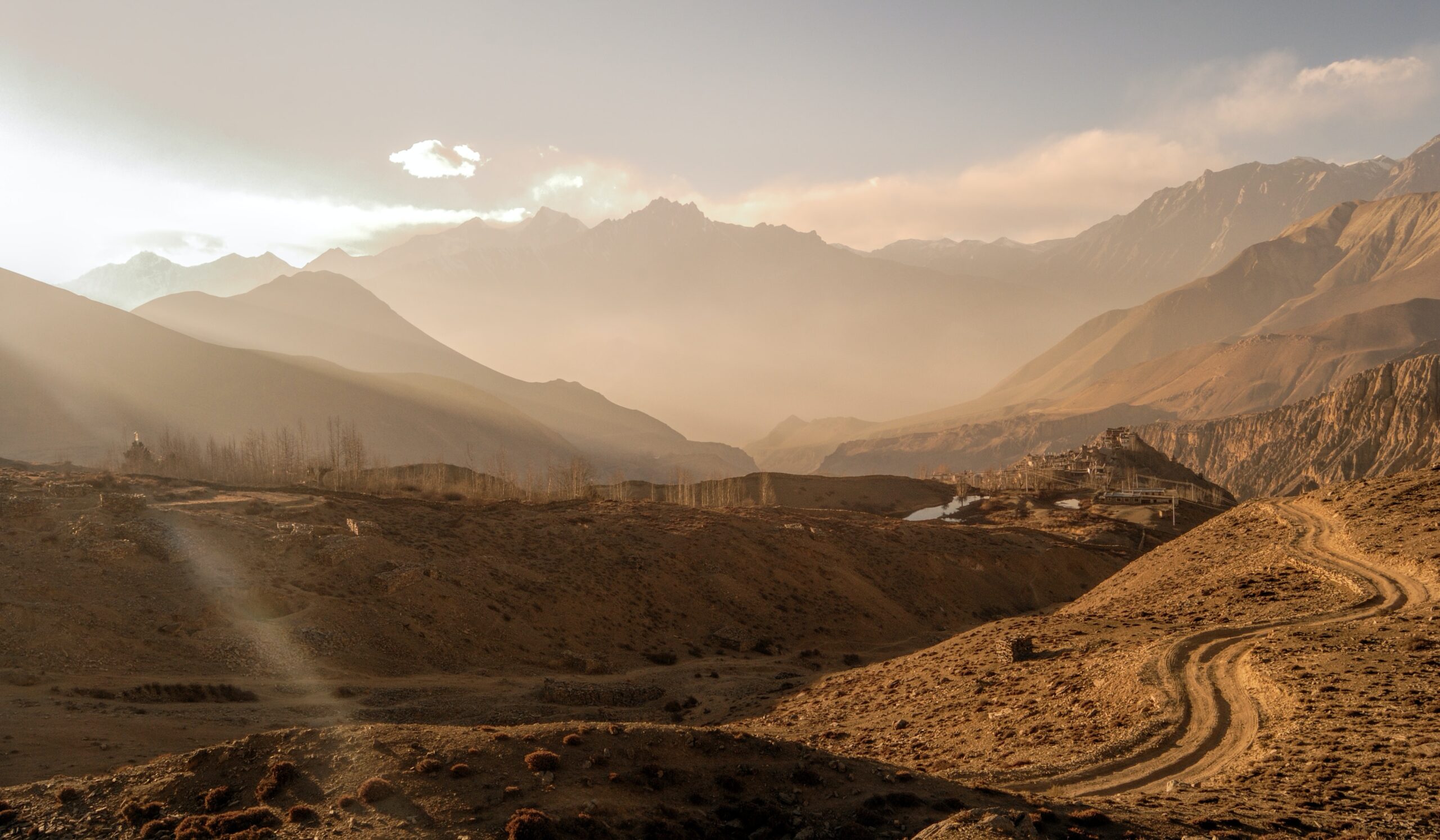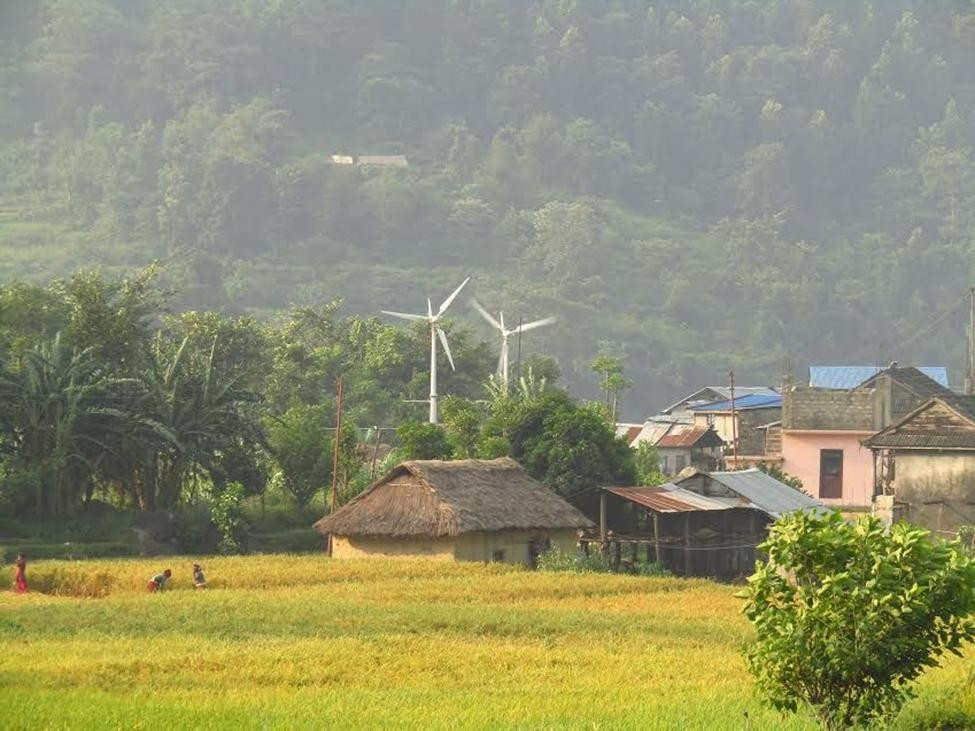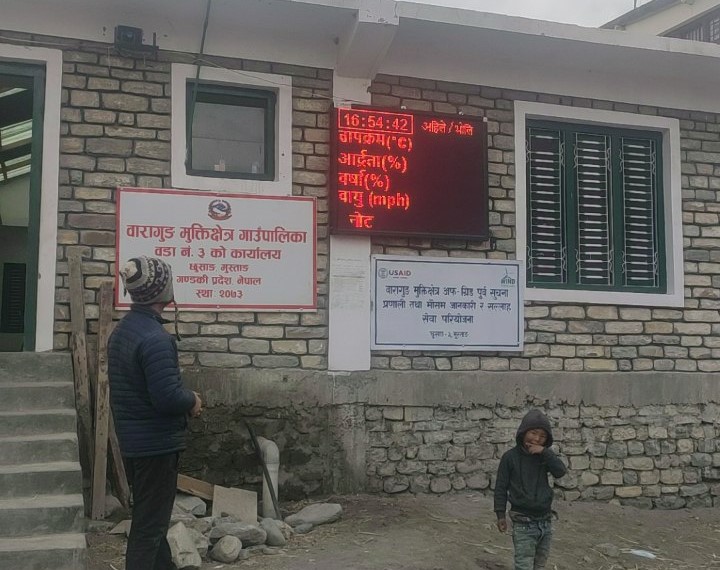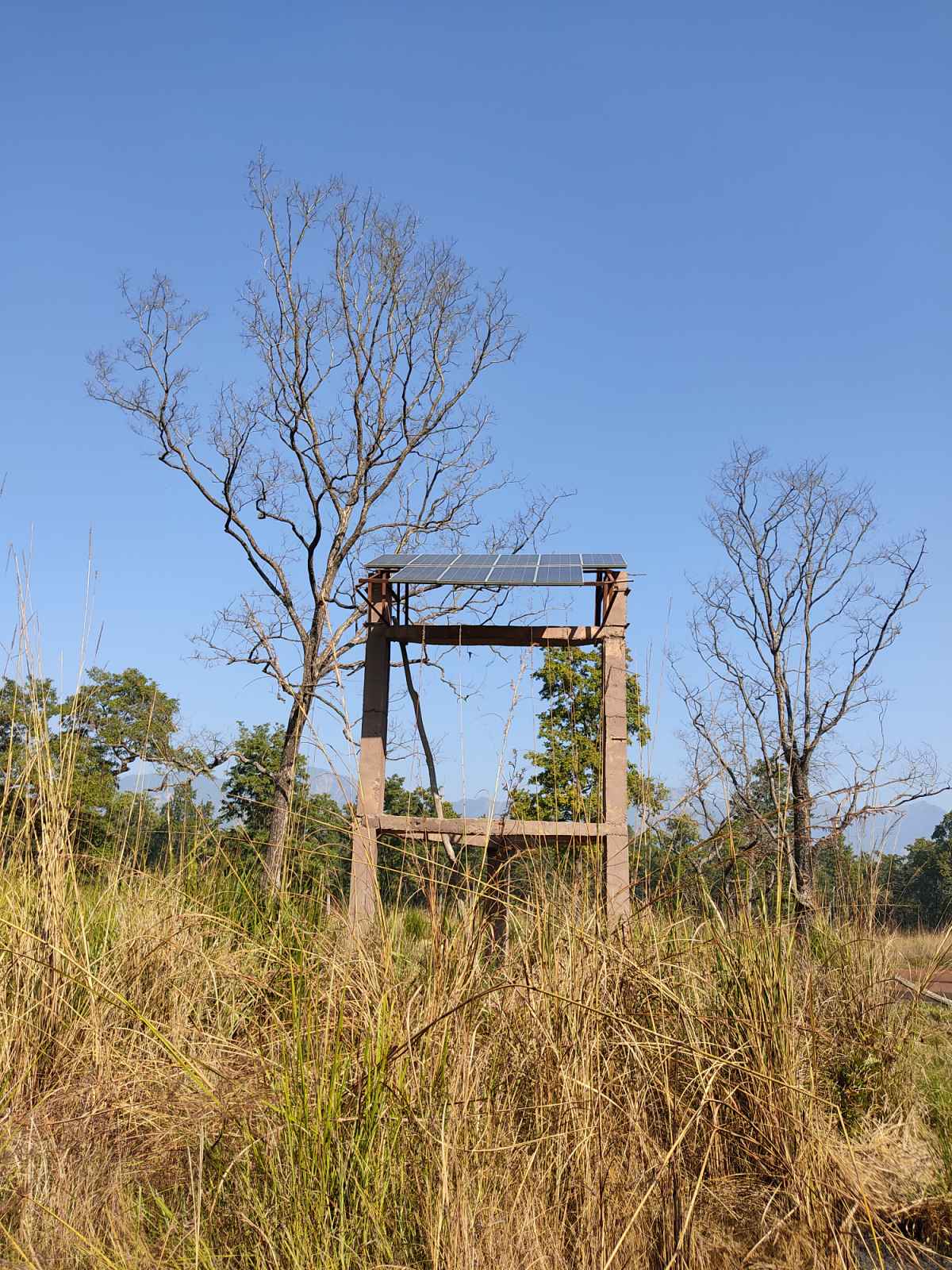Nepal has recently received a lot of global attention due to the 7.8 magnitude earthquake that shook the country on April 25, 2015. Out of all the earthquake affected communities, Barpak was the epicenter of the disaster, destroying 1200 houses and leaving only ten unharmed. The Wind Power Nepal (WPN) team joined Story Cycle in Sept 2015, to help with their Build Camp Project along with other professionals in Barpak.
Barpak is not an easy village to access, due to its remote location in a high mountainous area. We began our journey, on 10th Sept, early in the morning from Kalanki, Kathmandu, driving about four hours to Abu Khaireni on asphalt road for lunch. Following lunch, the team drove on the rocky roads to Baluwa. From Baluwa we began our second half of the voyage that consisted of a seven hour uphill hike to Barpak. This trek was necessary due to the recent earthquake, which made the main road inaccessible.
With many individuals in cities leading busy fast paced lifestyles, it is often hard for people to pause and listen to the personal stories of others. The rationale behind this trip to Barpak was to do exactly that, to speak to local people and record personal stories about their experiences with the devastating earthquake. Hearing their stories moved each and every member of our team to share these experiences with the public who would have otherwise never heard them.
The purpose of the visit to Barpak was not to provide goods, or offer abstract theoretical strategies to develop the community. Rather, it was to show that there were people who cared about them. This was seen when the stories were told not only with words, but also with emotions. The empathy that the team shared with the people reminded them that they were not alone in their struggle to restore their livelihoods. The team’s first impression of the people from Barpak was that they were a strong, intelligent and self-sustaining community. This first impression held true throughout the visit. Barpak is being restored at a fast rate without electricity. Everything had to be manual, from gathering resources for recovering their homes to mobilizing essential supplies from the cities.
The WPN team members who traveled along with Story Cycle also conducted a needs assessment. This process adopted a participatory approach, which involved those who were most affected. The team focused on understanding different sectoral issues of the village, such as housing, energy supply, water, sanitation, and healthcare. Due to WPN’s organizational mandate, the members took a greater interest in the issue of energy. Prior to the earthquake, Barpak’s electricity demands were fulfilled by a micro-hydro system. However, this power plant was severely damaged which paralyzed many people’s livelihoods and economic activities. The local people used electricity to operate mills, various tools for construction, powering home appliances and domestic lighting. Therefore, the major concern for the locals was electricity.
Currently, a 50kVA generator powers the village. It is used to provide electricity for lighting homes and the community mill used for food preparation. However, this generator is only operational between the hours of 6:00pm to 10:00pm. This generator is the only source of energy until the micro-hydro system is repaired. Therefore, through the needs assessment, WPN explored various alternative solutions for the locals until the micro-hydro system is functioning at full capacity. This could possibly mean expanding the use of integrated small solar panel units for domestic lighting during power outage hours.
Living and engaging with the local people truly gave our team an eye-opening and humbling experience. Even in the midst of the destruction, the local people never lost their positive attitude as they were selfless and constantly worried about our well-being. At times, seeing devastating damages of the earthquake was shocking. Our team hypothesized that the attitude of the people of Barpak may be from the natural environment and landscape that characterizes them. They have a beautiful view of the Buddha Mountain, and the sounds of flowing streams and chirping birds. Another factor that may have contributed to their well-being was due to the closely knit community where everyone was supportive of one another. Activities are conducted in groups, as opposed to individually.
Involvement in the Build Barpak Programme proved to be an invaluable experience as we received the opportunity to engage directly with the locals who were affected. The predetermined notions we had of Barpak as a small rural village completely shattered by the earthquakes was challenged. In reality, it is a sophisticated developed settlement, rich with resources and facilities. However, an immediate help is required regarding housing techniques, waste management, and temporary energy needs until the micro-hydro system gets fully functioning. WPN plans to work closely with Story Cycle to help deliver efficient and effective solutions to these issues raised.![]()
Written by: Zubin Shrestha & Francis Yoo
(Disclaimer: The views and opinions expressed in this article are those of the authors and do not necessarily reflect the official policy or position of WindPower Nepal Pvt Ltd.)




